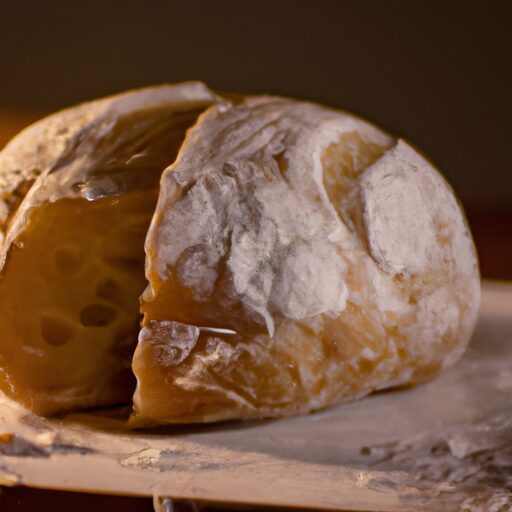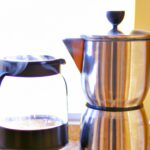
Bread making has become a popular hobby for many, and with the help of a bread maker, it has become easier than ever. From classic loaves to delightful cinnamon rolls, the options are endless. However, to ensure that your bread maker recipes turn out perfect every time, there are some tips and tricks you need to keep in mind. In this article, you will discover ten invaluable tips that will help you create the best bread maker recipes imaginable. Get ready to unleash your inner baker and elevate your bread-making skills to new heights.
Selecting the Right Bread Maker
When it comes to selecting the right bread maker, there are a few factors to consider. One of the most important things to think about is the size and capacity of the bread maker. If you have a large household or you plan on making large loaves of bread, a bread maker with a larger capacity would be ideal. On the other hand, if you have limited counter space or you just want to make small loaves, a compact bread maker would be a better fit.
Another feature to look for when selecting a bread maker is programmable options. This allows you to customize the settings and program the bread maker to your desired specifications. With programmable options, you have more control over the bread making process, allowing you to achieve the perfect loaf every time. Some common programmable options include crust color, loaf size, and different types of bread.
Lastly, checking for a delay timer in a bread maker can be incredibly convenient. A delay timer allows you to set a specific time for the bread maker to start the baking process. This is especially helpful if you want to wake up to freshly baked bread in the morning or if you want to have warm bread waiting for you when you return home from work.
Choosing the Right Ingredients
Now that you have selected the perfect bread maker, it’s time to choose the right ingredients for your bread recipes. Using high-quality flour is essential for achieving the best results. Look for flours that are specifically labeled for bread making, as they have the right gluten content and protein levels to create a well-risen and flavorful loaf of bread.
In addition to using high-quality flour, it is important to ensure that your yeast or leavening agents are fresh. Yeast is responsible for the fermentation process in bread making, so using fresh yeast ensures that your dough will rise properly. If you’re using leavening agents like baking powder or baking soda, make sure they are within their expiration date for optimal results.
If you’re feeling adventurous, consider using specialty flours or ingredients to enhance the flavor and texture of your bread. Whole wheat flour, rye flour, or even adding ingredients like nuts, seeds, or dried fruits can add a unique twist to your bread recipes.
Measuring Ingredients Accurately
To achieve consistent and delicious results with your bread maker recipes, it is crucial to measure your ingredients accurately. Using a kitchen scale for precise measurements is highly recommended, especially for flour and other dry ingredients. This ensures that you’re using the correct amount of each ingredient, resulting in a well-balanced and properly textured loaf of bread.
Sifting dry ingredients is another important step in measuring accurately. This helps to remove any lumps or clumps in the flour and allows for better incorporation with the other ingredients. It also helps to aerate the flour, resulting in a lighter and fluffier bread.
When measuring flour, it is important to avoid packing it down. Instead, gently spoon the flour into the measuring cup and level it off with a straight edge. Packing flour can lead to an excessive amount in your recipe, resulting in a dense and overly heavy loaf of bread.
Understanding the Bread Maker Settings
Now that you have the right bread maker and ingredients, it’s important to understand the different settings that come with your bread maker. Familiarize yourself with the basic settings such as the crust color options, loaf size options, and different types of bread that can be made.
Once you’re comfortable with the basic settings, don’t be afraid to experiment with custom settings. This allows you to adjust the time, temperature, and other variables to create a recipe that suits your taste preferences. Custom settings give you the freedom to create unique and personalized bread recipes.
In addition to the standard bread settings, many bread makers come with specialized settings like dough-only or bake-only options. These settings are perfect for making dough that you can use for things like homemade pizza or cinnamon rolls. The bake-only option allows you to use your bread maker as a mini oven for other baking projects.
Optimizing the Dough Preparation
Properly preparing the dough is crucial for achieving the best results with your bread maker. When kneading the dough, make sure to follow the recommended kneading time and technique to ensure proper gluten development. Kneading helps to develop the structure of the bread, resulting in a light and airy texture.
Allowing sufficient rising time for the dough is also important. This gives the yeast enough time to work its magic and create those beautiful air pockets that make bread so delicious. Follow the recommended rising times in your recipe and make sure to allow the dough to rise in a warm and draft-free area.
Another tip for optimizing the dough preparation is adding the ingredients in the recommended order. Most bread maker recipes will specify the order in which the ingredients should be added. This is important to ensure proper mixing and incorporation of the ingredients.
Enhancing Flavor and Texture
If you’re looking to take your bread maker recipes to the next level, consider incorporating herbs, spices, or seeds into your bread. Adding ingredients like rosemary, garlic, dried cranberries, or sunflower seeds can add a burst of flavor and texture to your bread.
Another way to enhance the flavor and texture of your bread is by using a combination of flours. Experiment with different ratios of whole wheat flour, rye flour, or even cornmeal to create a bread with a unique flavor profile. This will add depth and complexity to your bread recipes.
Furthermore, don’t be afraid to experiment with different types of sweeteners. Instead of using white sugar, try using honey, maple syrup, or even molasses. These natural sweeteners can add a subtle sweetness and complexity to your bread while bringing out different flavors.
Utilizing Pre-Programmed Recipes
Most bread makers come with a variety of pre-programmed recipes that you can try. This is a great way to get started and familiarize yourself with the capabilities of your bread maker. Explore the different recipes available and experiment with different types of bread, from whole wheat to sourdough to cinnamon raisin.
When using pre-programmed recipes, feel free to make adjustments to suit your preferences. If you prefer a darker crust, select a darker crust color option. If you like your bread to be softer, experiment with different loaf sizes and adjusting the internal temperature.
While using pre-programmed recipes, it’s important to take note of the recommended ingredient quantities. These recipes have been tested and fine-tuned to provide the best results. However, don’t be afraid to make small adjustments here and there to customize the recipe to your liking.
Troubleshooting Common Issues
If you run into some common issues while using your bread maker, don’t worry. They can be easily solved with a few simple steps. One common problem is dense loaves. This can happen if there is too much flour or not enough liquid in the recipe. Make sure to measure your ingredients accurately and adjust the recipe accordingly.
Another issue is over-risen bread, which can result in a collapsed or sunken loaf. This is usually due to too much yeast or a longer than necessary rising period. Adjust the amount of yeast or the rising time to prevent this from happening.
Burnt or undercooked bread can also be a common problem. If your bread is consistently coming out burnt, try reducing the baking time or adjusting the temperature. If it’s undercooked, increase the baking time and make sure to properly preheat your bread maker before adding the dough.
Properly Maintaining Your Bread Maker
To ensure the longevity and optimal performance of your bread maker, it’s important to properly maintain it. Regularly clean the bread pan and kneading blades after each use. Use warm soapy water and a soft sponge to gently clean these parts. Avoid using abrasive cleaners or harsh scrubbing tools that could damage the non-stick coating.
Follow the manufacturer’s guidelines for maintenance to keep your bread maker in top shape. This may include periodically lubricating moving parts, checking for loose screws, or other maintenance tasks. Following these guidelines will ensure that your bread maker continues to work efficiently and produce delicious bread for years to come.
Experimenting and Customizing Recipes
Once you have become comfortable with the basics of bread making, don’t be afraid to experiment and customize your own recipes. Substitute ingredients to cater to dietary restrictions or personal preferences. Try different flavor combinations like adding cheese and herbs or experimenting with different types of nuts.
You can also adapt recipes for various loaf sizes. If you prefer smaller loaves, adjust the recipe accordingly and reduce the baking time. On the other hand, if you’re hosting a dinner party and want to impress your guests with a larger loaf, increase the recipe and baking time.
Remember, bread making is an art and a science. The more you experiment and customize your recipes, the more you will learn and develop your own unique style of bread making. Enjoy the process and have fun creating delicious homemade bread with your bread maker.






